Teach kids To Cook: the Best Tips from an Expert
Miss T, at ten, can handle a knife and cook and bake with ease. Her brother, seven, not so much.
Yes, there’s an age disparity. But the real difference is that N is uninterested in food and cooking. Time to get him involved!
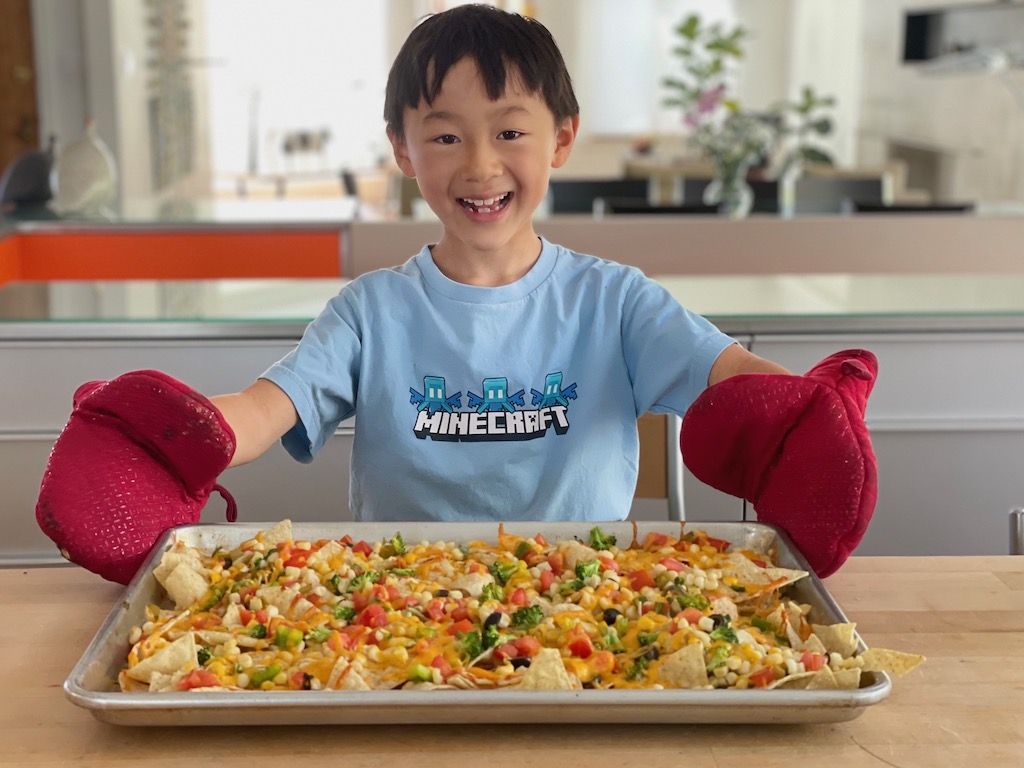
For expert advice in teaching kids to cook I turned to a friend and fellow Dame, Chef Janet Burgess, who lives in San Diego. She founded her own 4LittleCOOKS Cooking School, taught at Macy’s School of Cooking, and held cooking camps for the County’s Parks and Recreation programs in a 24-year career.
Janet published Chop, Cook, Munch! in 2012, which is still in print and also available as an e-book.
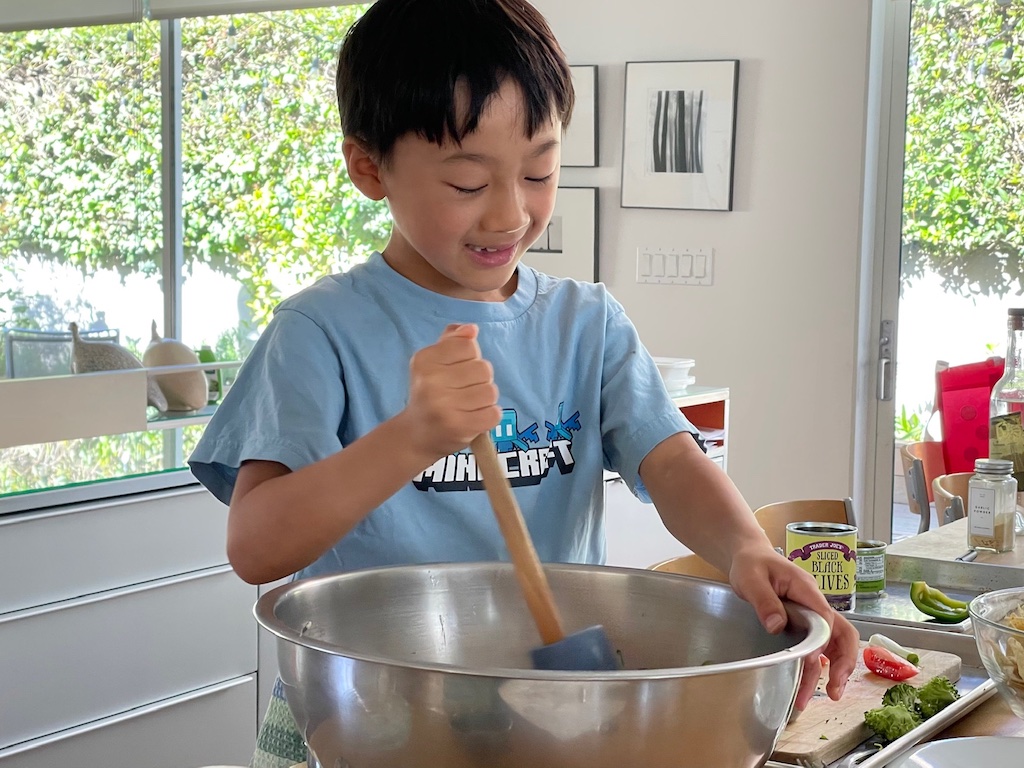
“I taught through breast cancer and COVID and only retired in 2022,” the dedicated teacher recalled. In addition to tried-and tested tips for cooking with kids, Janet shared with us her super-yummy recipe for Healthy Vegetable Nachos (recipe below).
Why Teach Kids to Cook
It’s about self-sufficiency. “Having the ability as an adult to cook and feed yourself is important because we all have to eat. It’s the one thing you can’t ignore,” she said.
It’s about cost. “To eat at a restaurant every day, or have fast food daily is the most expensive way you can eat,” she noted.
It’s about nutrition. “By cooking yourself you can control what you eat–you know what ingredients are in every dish.”
It’s about academics. “Cooking requires math and science if a recipe is to come out right. Especially in baking–it’s like magic!” Janet said.
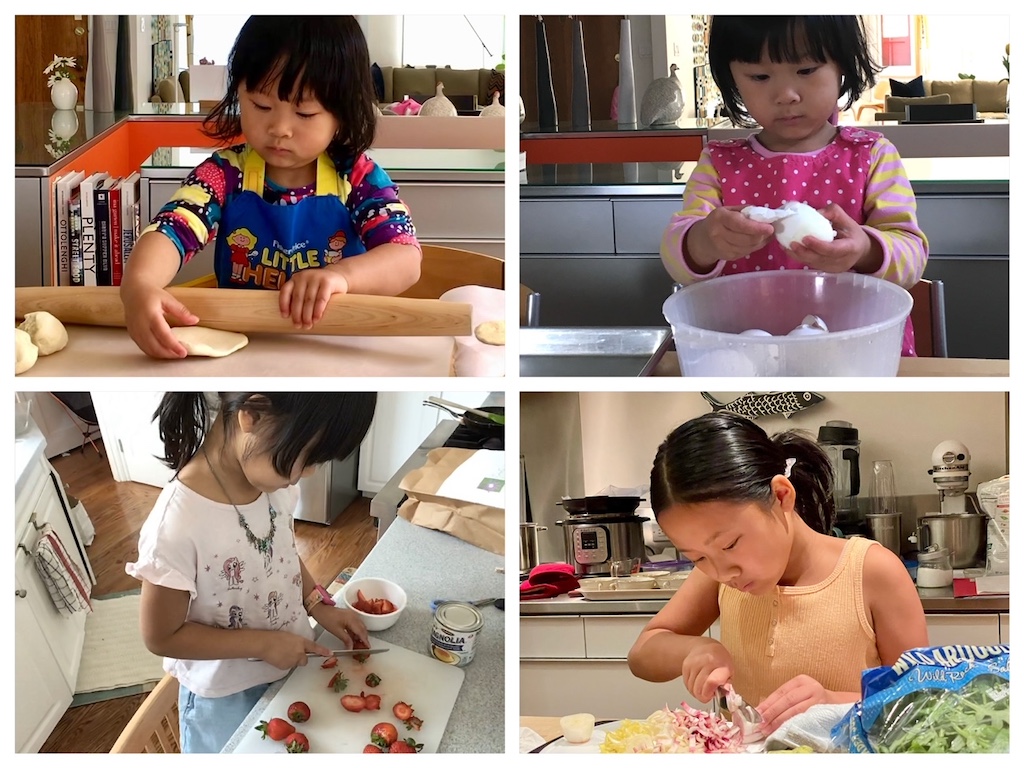
First, a Kitchen Safety Lesson
Here are some safety tips from Janet:
- Before they do anything, have kids wash their hands thoroughly with soap and water.
- Avoid loose clothing and baggy sleeves that can get caught on food, equipment, or pot handles on the stove. Don’t wear flammable clothing like polyester T-shirts. Pull back long hair into a ponytail.
- Use a plastic knife–the ordinary, takeout food variety–as your primary cutting tool.
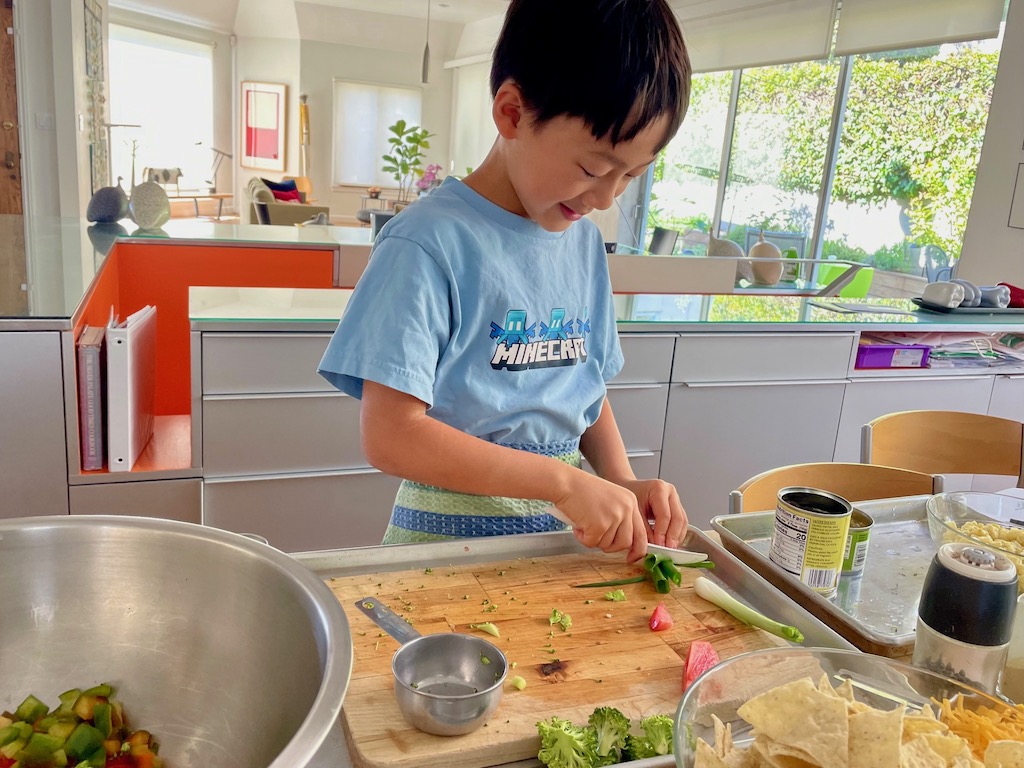
- Stand away from hot equipment like ovens, toaster ovens, stovetop burners, and dishes that have just come out of the oven. Watch out for boiling water.
- Make sure knives and kitchen scissors are sharp; getting cut by a dull tool will injure you more than a sharp one. Here are more knife safety tips.
- Goofing around causes accidents.
- Wear an apron. Ingredients can stain clothing. Also kids’ clothes might be carrying a lot of germs from playing all morning at a park or roughhousing with the dog.
Prep Before you Cook
Instead of rushing into the recipe, take time to prep. This will ensure the child will have a successful cooking experience.
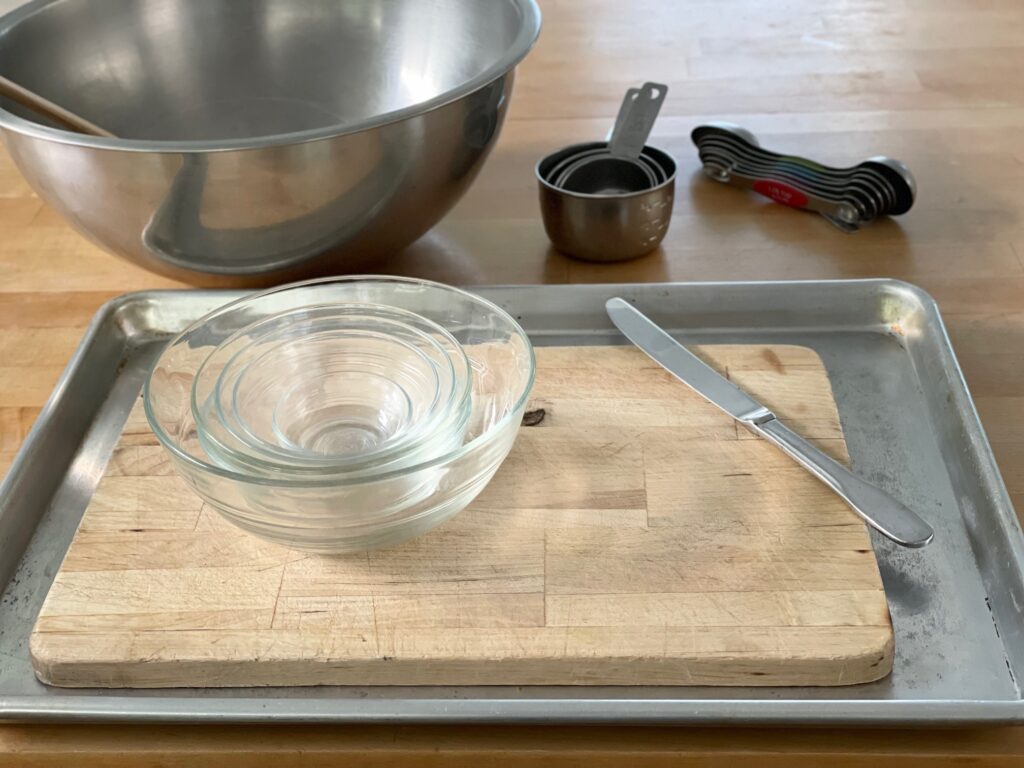
- Gather all the tools and equipment needed to make the recipe.
- Read the recipe first; then have the child read the recipe to make sure they understand the instructions.
- Have the proper tools; know the difference between liquid and dry measuring cups and why you need both in cooking.
- Gather all the ingredients. Prep ahead to support a first-time cook. For example, I cored and halved the tomatoes and sectioned the bell pepper to make it easier for N to dice.
- Be patient. If the child seems to lose interest, don’t force their participation. An introduction to cooking should be fun.
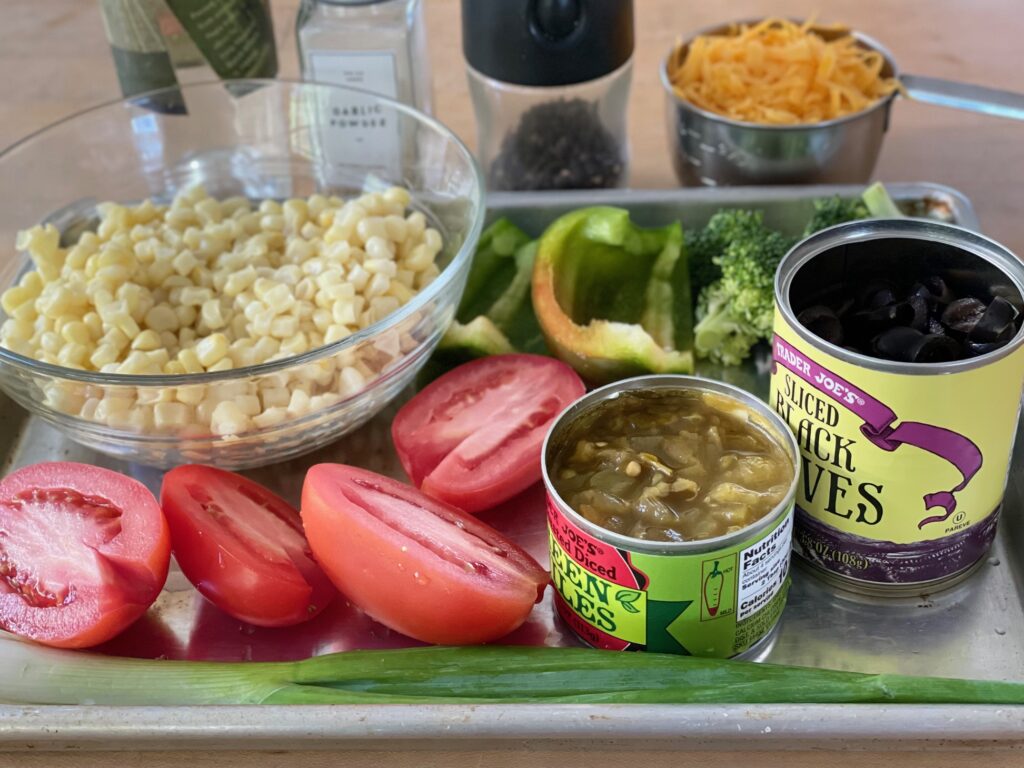
Know your Child
In addition to embracing Janet’s excellent universal advice, if you are working with just one or two grandkids, you can customize the lesson.
For example, working with N, I know he can be disciplined, focused, and can follow instructions. So, when he was having difficulty cutting one of the vegetables with a plastic knife, I gave him a paring knife. I knew he would be respectful of the danger and not treat the knife as a toy. And I watched over him the entire time.
If the child you are working with has a short attention span, is not one to take the dangers of a kitchen seriously, or is unwilling to follow instructions, you’d want to take those traits into consideration when choosing a cooking project that will be safe.
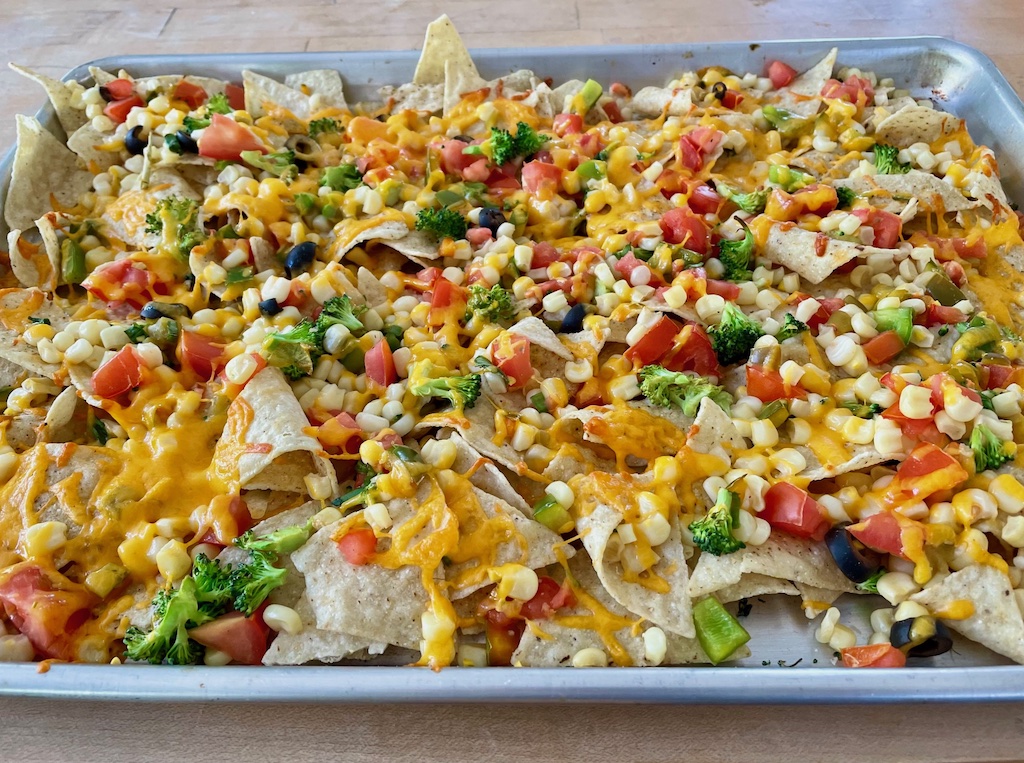
One of Janet’s favorite recipes for kids is Healthy Vegetable Nachos, made in a sheet pan with plenty of vegetables. Even kids who dislike vegetables will be converted. Chopped up, blanketed with shredded cheese, and surrounded by chips, the vegetables meld right in. “Kids gobble it up!” Janet says.
Healthy Vegetable Nachos
Ingredients
- 1 (10 ounce) package of frozen corn, pre-cooked following package directions and drained
- 1 cup diced tomato
- ½ cup chopped broccoli florets
- ¼ cup diced green bell pepper
- 2 tablespoons sliced green onion
- 2 tablespoons chopped green chilies
- 2 tablespoons sliced black olives
- 2 tablespoons white vinegar
- ¼ teaspoon garlic powder
- ¼ teaspoon black pepper
- ½ bag (from a 14-ounce bag) baked corn tortilla chips
- 1 cup shredded Cheddar cheese
- ½ cup chopped parsley (optional)
Tools
- Large mixing bowl
- Small knife
- Cutting board
- Measuring spoons
- Measuring cups
- Large mixing spoon
- Baking sheet (13- X 18-inches)
Heat oven to 350 degrees. Mix corn, tomato, corn, broccoli, bell pepper, onion, chilies, olives, vinegar, garlic powder and black pepper in a large mixing bowl.
Spread tortilla chips on the baking sheet. Top with vegetable mixture. Sprinkle with cheese. Place in oven and bake for 8 to 10 minutes, or until cheese melts. Sprinkle with parsley and serve.
Serves 6.
Recipe from Chef Janet Burgess, slightly adapted.
Notes:
- While it adds to the fat content, you might like to add a little more shredded cheese.
- I skipped the chopped parsley because the nachos were so colorful, they didn’t need the added green. Also, kids tend not to like parsley, although this herb is a good source of vitamins and iron.
What Else to Cook with your Child?
Research recipes online or in cookbooks. Janet recommends making healthy snacks.
For example, make an easy dip, such as hummus. Serve with crackers and vegetables like baby carrots and introduce vegetables the kids might not have tried before, such as raw green bell pepper strips.
For a main dish, think spaghetti, a tuna casserole, or a dish they can make with chicken tenders, she advises.
Another idea from Janet is to try a taco salad. Or make a main dish salad by adding a protein source like beans, chicken strips, or shrimp to turn a luncheon salad into supper.
Some “Call Me Grandma!” Recipes Kids can Make
Every recipe can have its inherent dangers–using a hot stove or oven, dealing with the sharp blades of a food processor or blender, or cutting with a knife. So, I offer these easy recipes with a few caveats.
READ the recipes thoroughly. Understand the steps and CONSIDER whether or not they are appropriate for your child’s skill level and dexterity. WATCH over the child during any potentially dangerous steps, such as cutting with a knife, standing over a hot stove, or putting something in and out of the oven.
Always handle a food processor or blender yourself; never leave it to the kids. And be extra-careful of where you put the blade when it is out of its appliance housing.
Snacks and Sweets
- Simple Deviled Eggs is a way to introduce cooking to a three-year-old.
- Fragrant Irish scones is a welcome breakfast treat.
- No-Bake Peanut Butter Cereal Bars with nut-free and gluten-free options is a good recipe for kids just learning to measure and mix; no hot oven is involved.
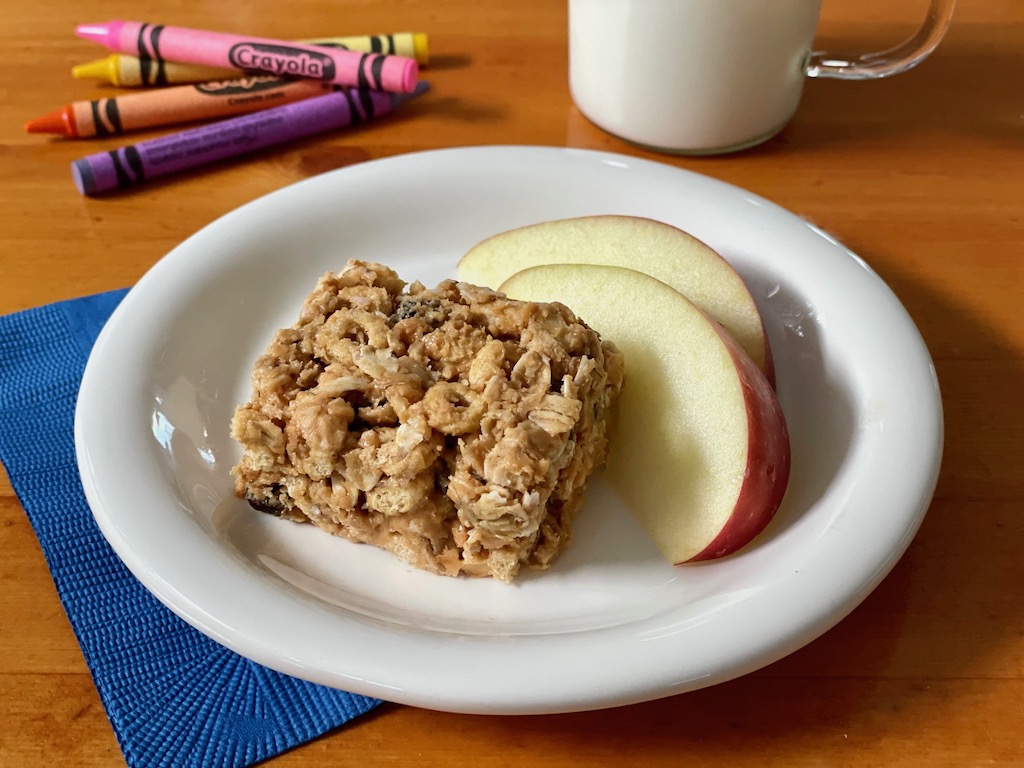
- Chichi Dango, a mildly sweet, gluten-free Japanese dessert, is one of the most popular recipes on “Call Me Grandma!”
- Paletas, Mexican fruit pops, are made with fresh fruit and are refreshing for summertime snacking.
- You can make Strawberry Cheesecake in a Cup with your grandchild long-distance, as I did with Miss T during the pandemic.
Mealtime Ideas
- Delicious Lemony Kale Salad with Apples and Nuts may be a bridge too far for kids because of the bitterness of kale, but it’s balanced with the sweetness of apples and dried cranberries.
- Joe’s Special, an old-time, retro San Francisco recipe, can be breakfast or supper for a kid who can handle stovetop cooking.
- Old School Tacos is a simple recipe; spoon the spicy meat mixture into pre-made taco shells or use as a basis for taco salad. This recipe is for a child who is experienced cooking at the stove.
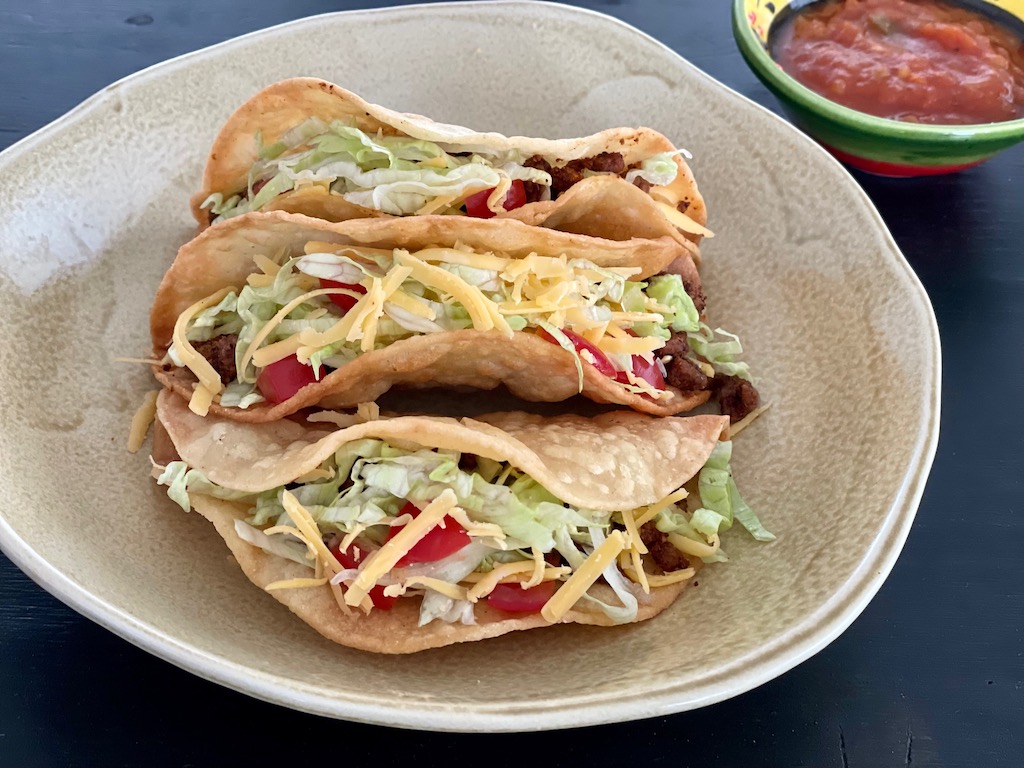
Sign Up!
Don’t forget to sign up for my email newsletter. Every Wednesday, I’ll give you a new idea for an activity or insight to nurture the little ones in your life.